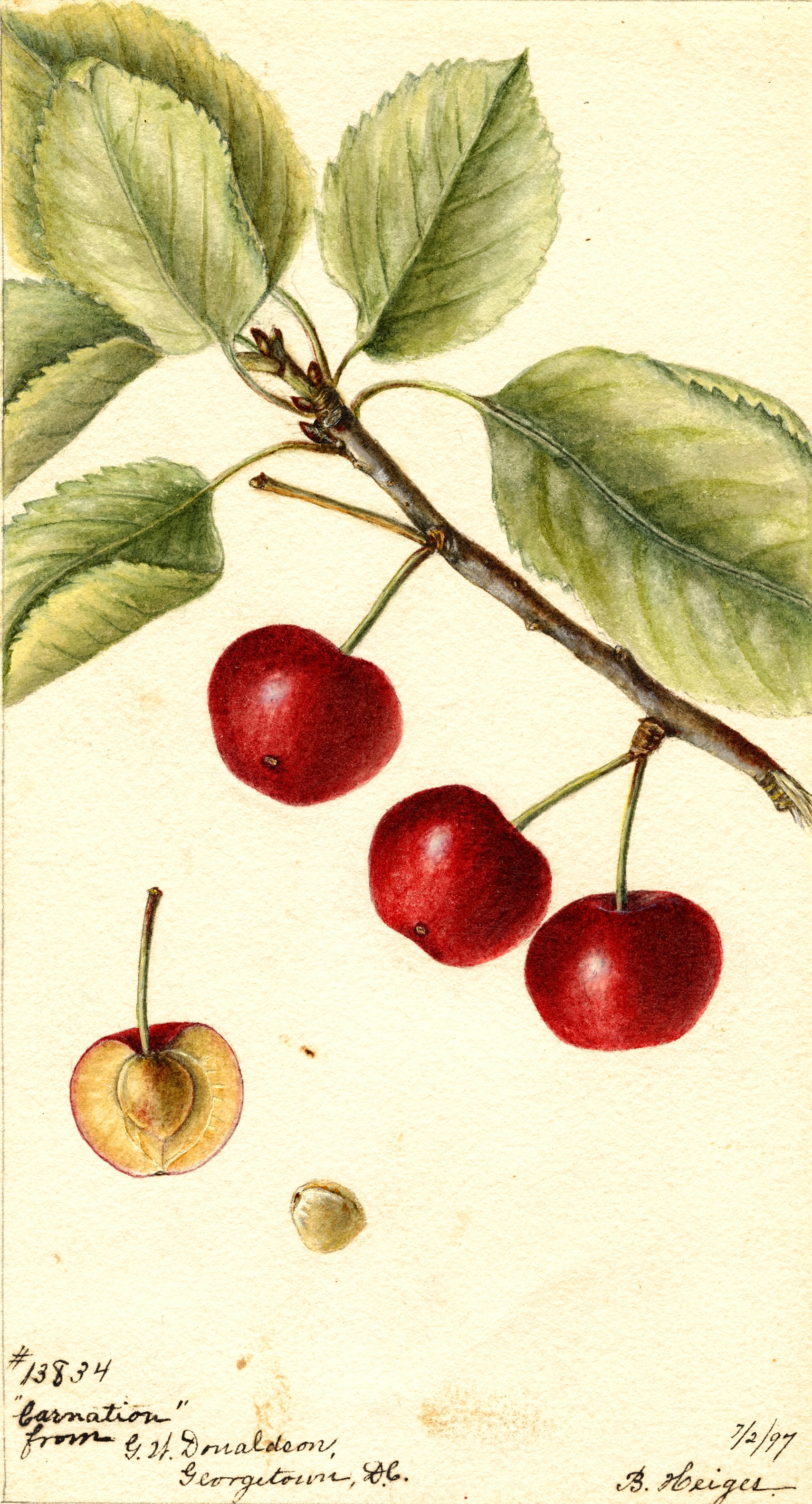 CARNATION
CARNATION
A large, yellowish white cherry marbled with orange, the sour Carnation was usually characterized as having a “sprightly” flavor, juicy and sub-acid. [Franklin Davis, Richmond Nurseries 1869] Ripening in July, the Carnation was a regular bearer, producing a moderate crop every year. Because of propensity for rotting upon ripening, the Carnation was picked days before full maturity. Since the Carnation tended to be used in pies, preserves, and sauces, the need for a perfect ripened fruit was not so pressing as if it had been a sweet cherry. Of the Duke class of cherries (those produced from one sour and one sweet parent), the Carnation is probably the most tart. Of English origin, it was advertised by William Prince in the March 1822 issue of The American Farmer as the July cherry “best for preserving.” [“Catalogue,” American Farmer 3, 52 (March 22, 1822), 415. In the 19th is was particularly valued because it ripened after the last sweet varieties, and before the Morello and Belle Magnifique. Extinct? Notes: “Two Fine Late Cherries,” Genesee Farmer 9,9 September 1848), 231.
William Prince in The Pomological Manual (1831) provided an early portrait of the Carnation: "This fruit, which derives its title from its colour, is of a large size, and nearly of a round form; the skin is a yellowish white, beautifully mottled with red; the flesh yellow, rather firm, and of a pleasant taste, but less sweet than many other varieties; the juice is sprightly and of a pale colour. If eaten before it is fully mature, it has a slight degree of bitterness. This cherry ripens among the late varieties in July, and is held in high esteem for preserves. The tree is of low stature, being more spreading than lofty, and its branches have often somewhat of a horizontal or even a drooping appearance. Its foliage indicates much vigour, and the fruit is less subject to the attacks of birds and insects than most of the other fine varieties of cherries, and also remains without decay or rottenness for a longer period than other sorts usually do. The tree bears tolerably well, but not abundantly" (Vol. 1, 137-38).
Because Thomas Jefferson esteemed the Carnation the best cherry, Monticello has maintained the variety and has budwood for propagation.
Image: U.S. Department of Agriculture Pomological Watercolor Collection. Rare and Special Collections, National Agricultural Library, Beltsville, MD 20705, Bertha Heiges, 1897.
David S. Shields